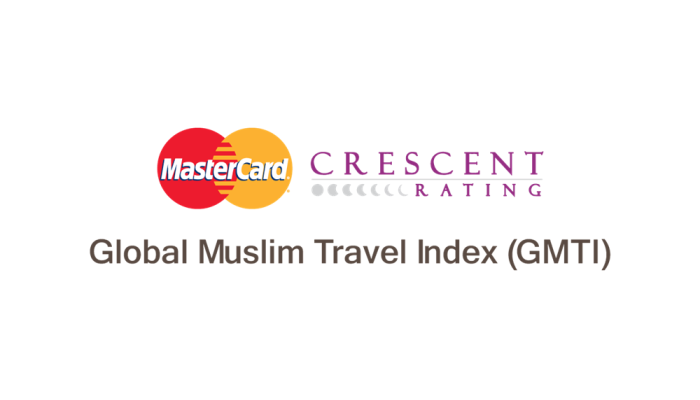- UAE ranks second while five out of six Gulf Cooperation Council states among the top ten OIC destinations in the GMTI 2016
- South Africa is number four on the list for non-OIC countries, preceded by Singapore, Thailand and the UK
- In 2015, the estimated total Muslim visitor arrivals were 117 million, representing 10 percent of the entire travel economy. This is expected to grow to 168 million travelers in 2020, spending over US$200 billion.
- Asia and Europe are the two leading regions attracting Muslim visitors, accounting for 87 percent of the entire Muslim travel market
Eight countries from the Middle East & Africa (MEA) region have ranked among the top ten destinations in the global Muslim travel market, according to the most comprehensive research focusing on this fast-growing sector.
The MasterCard-CrescentRating Global Muslim Travel Index (GMTI) 2016, which covers 130 destinations, saw the UAE moving up one spot to second place on the list of Organisation of Islamic Cooperation (OIC) destinations, with five out of the other six Gulf Cooperation Council (GCC) states, including Qatar, Saudi Arabia, Oman and Bahrain, also being placed among the top ten destinations. Malaysia retained its number one position on the list.
South Africa has taken the fourth spot while Singapore has retained its pole position for the non-OIC destinations, with Thailand, United Kingdom and Hong Kong making up the top five.
The study also revealed that in 2015, there were an estimated 117 million Muslim visitor arrivals globally, representing close to 10 percent of the entire travel market. This is forecasted to grow to 168 million visitors by 2020 representing 11 percent of the market segment with a market value spend projected to exceed US$200 billion.
Asia and Europe were the two leading regions in the world for attracting Muslim visitors – accounting for 87 percent of the entire market.
“We are pleased to see eight countries from the Middle East and Africa (MEA) region occupying top places in the MasterCard-CrescentRating Global Muslim Travel Index 2016. These rankings highlight the MEA region’s strong focus on consistently answering the needs of the fast-growing Muslim travel market, especially since this is one of the key sectors driving greater economic development across the region and is expected to contribute significantly to the long-term tourism growth strategies of these countries,” said Raghu Malhotra, President, Middle East and Africa, MasterCard.
“The MasterCard-CrescentRating Global Muslim Travel Index 2016 has now become the number one tool fordestinations around the world to realign their strategies to reach out to the Muslim consumer. One of the biggest trends we are seeing is non-OIC destinations making a concerted effort to attract the Muslim tourist and they now represent over 63 percent of the destinations covered in the GMTI. For example, Japan and Philippines have taken some major steps over the last few months to diversify their visitor arrivals and boost their economy in the process,”said Fazal Bahardeen, CEO of CrescentRating & HalalTrip.
The GMTI 2016 is the most comprehensive research available on one of the fastest-growing tourism sectors in the world, which represents 10 percent of the entire travel economy.
The GMTI looks at in-depth data covering 130 destinations, up from 100 covered in the 2015 index. This is the first time such thorough insights have been provided on one of the world’s fastest-growing tourism sectors.
The Index helps destinations, travel services and investors to track the health and growth of this travel segment while benchmarking their individual progress in reaching out to this growing market.
All 130 destinations in the GMTI have been scored against a backdrop of criteria including suitability as a family holiday destination, the level of services and facilities provided, accommodation options, marketing initiatives as well as visitor arrivals.
Each criterion was then weighted to make up the overall index score. This year, two new criteria – air connectivity and visa restrictions – were added to further enhance the Index.
Malaysia has an Index score of 81.9, followed by UAE at 74.7 and Turkey at 73.9. The highest scoring non-OIC destination were Singapore which scored 68.4 followed by Thailand at 59.5.
Taiwan and Japan have continued to improve their overall rankings. The overall average GMTI score for the complete 130 destinations currently stands at 43.7. From a regional perspective, Asia Pacific destinations lead with an average GMTI score of 56.5.
The top 10 OIC destinations in the GMTI 2016
| RANK | GMTI 2016 RANK | DESTINATION | SCORE |
| 1 | 1 | Malaysia | 81.9 |
| 2 | 2 | United Arab Emirates | 74.7 |
| 3 | 3 | Turkey | 73.9 |
| 4 | 4 | Indonesia | 70.6 |
| 5 | 5 | Qatar | 70.5 |
| 6 | 6 | Saudi Arabia | 70.4 |
| 7 | 7 | Oman | 70.3 |
| 8 | 9 | Morocco | 68.3 |
| 9 | 10 | Jordan | 65.4 |
| 10 | 11 | Bahrain | 63.3 |
The top 10 non-OIC destinations in the GMTI 2016
| RANK | GMTI 2016 RANK | DESTINATION | SCORE |
| 1 | 8 | Singapore | 68.4 |
| 2 | 20 | Thailand | 59.5 |
| 3 | 21 | United Kingdom | 59.0 |
| 4 | 30 | South Africa | 53.1 |
| 5 | 31 | Hong Kong | 53.0 |
| 6 | 31 | France | 51.6 |
| 7 | 33 | Taiwan | 50.1 |
| 8 | 34 | Japan | 49.1 |
| 9 | 35 | Sri Lanka | 49.0 |
| 10 | 36 | United States | 48.9 |
The full report is available here.
About the Global Muslim Travel Index (GMTI) 2016:
First launched in 2015, the GMTI has now become the premier source in benchmarking destinations across the world on how they are engaging with one of the fastest-growing tourism sectors in the world – the Muslim travel market.
While the GMTI 2015 covered 100 destinations, the 2016 Index has been expanded to include 130 destinations from across the world. The GMTI is not only of assistance to Muslim travelers but also helps the travel industry and investors to understand and keep track of the growth potential each destination has to offer.
All 130 destinations in the GMTI were scored against a backdrop of criteria which included suitability as a family holiday destination, the level of services and facilities provided, accommodation options, marketing initiatives, air connectivity, as well as visitor arrivals. Each criteria was then weighted to make up the overall index score.














